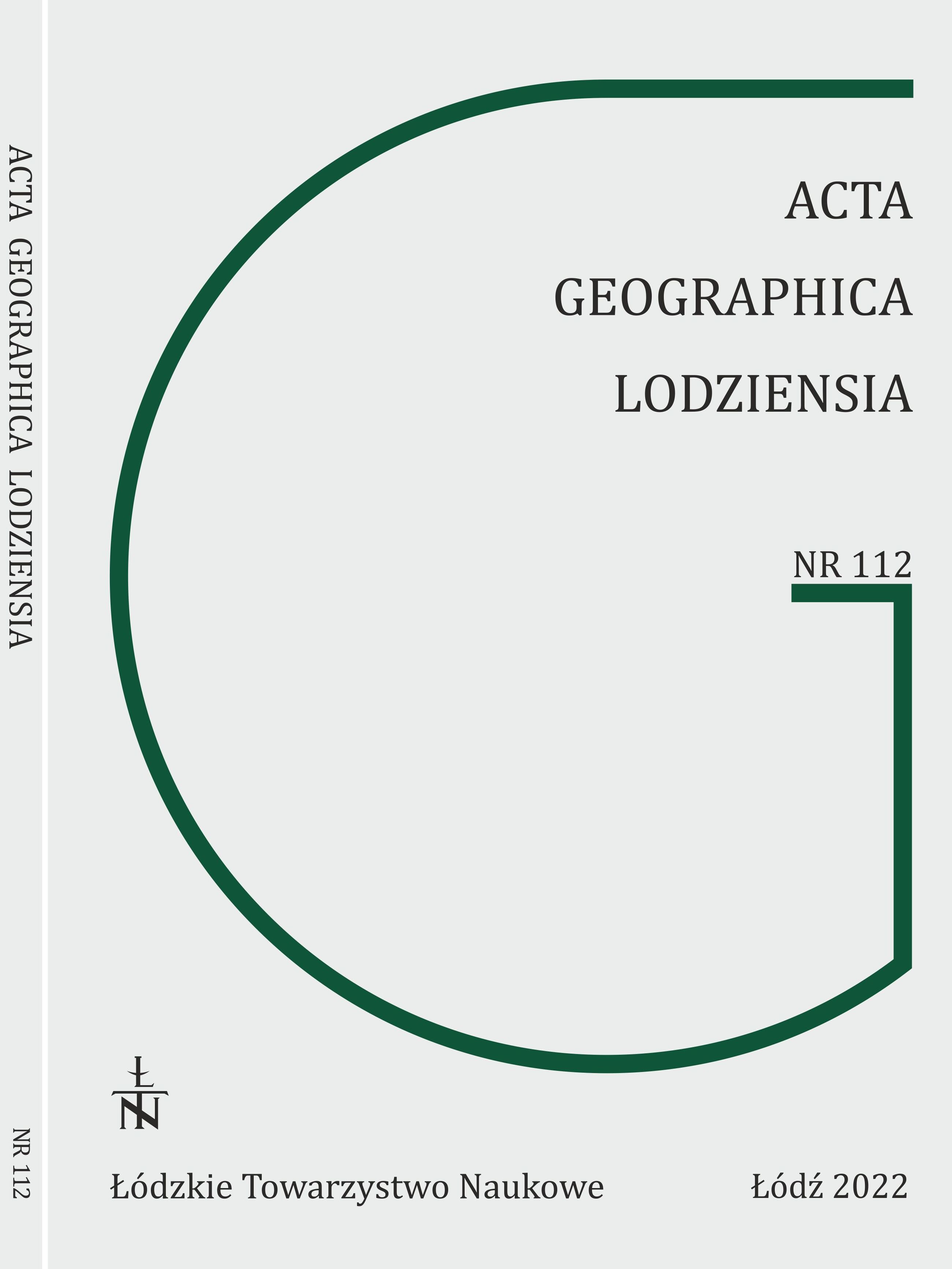Trójdzielność młodszego dryasu obserwowana w rozwoju roślinności w otoczeniu torfowiska żabieniec w środkowej Polsce
Three phases of vegetation development during the Younger Dryas at Żabieniec mire, central Poland
Author(s): Krystyna MileckaSubject(s): Geography, Regional studies
Published by: Łódzkie Towarzystwo Naukowe
Keywords: Younger Dryas; Żabieniec mire; phases of vegetation changes; pollen analysis
Summary/Abstract: The Żabieniec mire is located in central Poland on the Łódź Highlands. Paleogeographical and paleoecological research have been being conducted there from a few decades. Organic sediments accumulated during the Eemian Interglacial, Vistulian Glaciation and Holocene reveal a continuous and detailed record of vegetation succession and environmental changes during these periods. Initially, a lake existed there and gyttja constitutes the sediment of the lower part of investigated core. Nowadays, there is still a small area of open water surrounded by mire. The high thickness of organic sediments, which is exceptional for old-glacial areas, enabled palaeoecological analyses and a detailed description of environmental history during the Late Glacial and Holocene. This article presents the pollen analysis record of vegetation development during the Younger Dryas, the last cold period of the Late Glacial. The chronology is based on radiocarbon dating made at the Gliwice Radiocarbon Laboratory of the Silesian University of Technology (Petera-Zganiacz et al. 2022). The course and proportions of dominating taxa and important “cold” species allowed for the division of the diagram into three phases. The first one lasted ca 900 years (50 cm of sediments) and shows a cooling, the development of cold-demanding plant communities, deforestation and an increase in trophy. The cooling of the climate was revealed in higher curves of Juniperus, Poaceae and Artemisia. The presence of pollen grains of light-demanding Hippophaë proved deforestation and dominance of open plant communities. Apart from aforementioned Artemisia, there grew steppe plants like Ephedra distachya and E. fragilis, Helianthemum and some herbs of identified: Chenopodiaceae, Anthemis type, Cichorioidae. Dwarf shrubs developed in wet habitats, namely Betula nana type and Salix polaris type. Dryas octopetala appeared on soil patches rich in calcium carbonate. The second phase lasted not longer than 230 years (50 cm of sediments) and shows preservation of cold-demanding vegetation and high trophy of the lake. This is the phase of stable existence of cold-demanding species. A cold steppe dominated by Poaceae and Artemisia was enriched by many herbal plants represented in pollen types: Gypsophila repens type, Rumex acetosella, Bupleurum, Senecio type, Anthemis type, Cichorioidae. Thalictrum, Valeriana officinalis, Solanum dulcamara, Rumex acetosa developed next to dwarf shrubs of Betula nana and Salix. Exclusively in this phase, there appeared pollen type of Saxifraga hieraciifolia, a plant of calcareous habitats in subarctic regions and high mountains. At the same time, Juniperus and steppe elements (Helianthemum, Ephedra) decreased. High curves of Pediastrum and disappearance of spores of Isoëtes revealed high trophy of the lake during this phase. The third phase lasted ca 120 years (30 cm) and shows a decrease in cold- and light-demanding tundra and steppe taxa. There were only single pollen grains of Betula nana, Salix polaris type, Dryas octopetala. Meanwhile, Ephedra, Helianthemum and Gypsophila repens type disappeared. Trophy was clearly decreasing. Significant changes in trophy are suggested mainly based on the presence of Isoëtes, a plant of a very nutrientpoor water. The main changes in trophy are revealed mainly by high curve of oligotrophic Isoëtes found at the end of Allerød and then at the end of the Younger Dryas, while a phase of high trophy is marked by growing curves of some varieties of Pediastrum boryanum. Pollen analyses of some sites in Poland suggest that vegetation succession driven by macroclimatic features is significantly modified by local factors such as geomorphology, topography and physico-chemical properties of the ground/ habitat. Periods of cooling and warming at the be-ginning and end of the Younger Dryas have previously been defined in detail for the laminated sediments of Lake Gościąż. Microfacies, isotops and other paleoclimatic analyses done for that site indicated that the decrease in temperature at the beginning of the Younger Dryas and its in-crease at the end lasted, respectively, 180 and 70 years. They are shorter periods than phases of vegetation changes, because the reaction of plants and ecosystems development takes more time. Most Younger Dryas pollen diagrams in Poland can be divided into two parts. The first, older one reveals the development of tundra and cold steppe vegetation as a result of the climate cooling. The second shows the disappearance of cold-demanding species and tundra vegetation and the development of plants of warmer climate such as Typha latyfolia and Filipendula. Such a division can be found on diagrams from the Witów, Gościąż, Kaniewo, Łukie sites. Some pollen records, however, show stable curves during the entire Younger Dryas (Perespilno, Imiołki).
Journal: Acta Geographica Lodziensia
- Issue Year: 2022
- Issue No: 112
- Page Range: 7-17
- Page Count: 11
- Language: English, Polish

